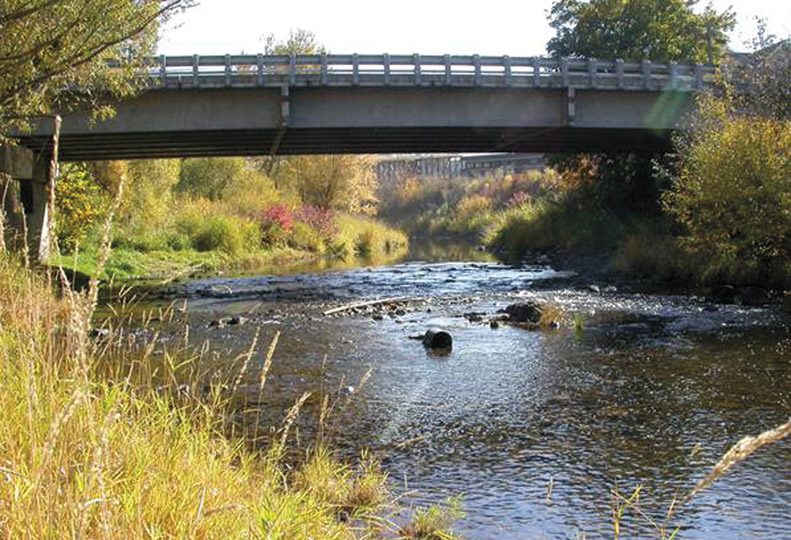
Home » Palouse River water quality rehabilitation plan advances
Palouse River water quality rehabilitation plan advances
North Fork effort targets problem oxygen, pH levels

September 10, 2015
A new plan for the North Fork Palouse River south of Spokane that aims to improve water quality and stream health for fish and other aquatic life is moving toward implementation, which should occur before the end of the year, a Washington Department of Ecology representative says.
Following a public comment period on the plan that ended Aug. 21 and attracted relatively little response, the state agency expects to publish a final version of the plan document later this month, says the representative, Elaine Snouwaert, a Spokane-based water quality specialist.
Shouwaert, who is Ecology’s lead person on the project, says the plan then will be submitted to the U.S. Environmental Protection Agency, for its review and approval. It will have 30 days to approve the plan after receiving it, she says.
Ecology developed the plan in response to problems such as insufficient dissolved oxygen and high pH in the river, and it’s part of a broader effort that’s aimed at improving water quality throughout the Palouse River watershed.
Dissolved oxygen in a water body is vital to the health and sustainability of fish populations. Fish and other aquatic organisms need oxygen to “breathe” just like humans. Some insects and fish become sick or die when oxygen levels are too low.
Meanwhile, the pH reflects the chemical balance of water. High pH indicates that water is alkaline, which can result in toxic or lethal conditions for aquatic life.
One pollutant that Ecology’s plan addresses is nitrogen, which acts like a fertilizer, causing algae to flourish. Excess algae leads to wide daily swings in the dissolved oxygen levels and pH in the water.
The Palouse River enters Washington state from Idaho near the town of Palouse and flows west through a variety of terrain until it meets the Snake River downstream of the Hooper community and the Palouse Falls. Taking into account the drainage areas of all of the Palouse River tributaries, the watershed is one of the largest in the state, Ecology says. Therefore, much of the agency’s initial water quality work has focused on the main stem Palouse River and tributaries known to be impaired.
In an effort to meet water quality standards and improve stream health on the North Fork, which refers to the stretch of river from the Idaho state line to the river’s confluence with the South Fork Palouse River in Colfax, the plan outlines several actions that Ecology says need to be implemented.
The most significant, concentrated source of nitrogen to the North Fork Palouse River is discharge from the city of Palouse wastewater treatment plant, the agency says. The city will need to explore options to meet new permit limits required by the new plan, it says.
“For this particular plan, I think the biggest improvement we’ll see is once the city of Palouse comes into compliance with their permit limits,” Shouwaert says.
Other actions that Ecology says are needed to achieve desired water quality standards in the river include restoring historic natural levels of streamside shade and reducing pollution in stormwater runoff. Additionally, it says, action is needed to prevent soil erosion and fertilizer nutrient release to streams or groundwater from agricultural and residential land, and the effluent from failing septic systems must be stopped from reaching the river.
Essentially, Snouwaert says, the focus is on trying to restore the river to a natural condition.
“One of the most important things is to have a healthy riparian area, or streamside vegetation,” she says.
She says the current Palouse River water quality improvement planning effort began in 2005 and included information gathering in 2007 and 2012 related to the North Fork. Ecology currently is looking at temperature, dissolved oxygen, and pH levels on the river’s South Fork.
Ecology posted the plan online, and it also was available for the public to view at libraries in Palouse and Colfax.
Up Close
Related Articles



